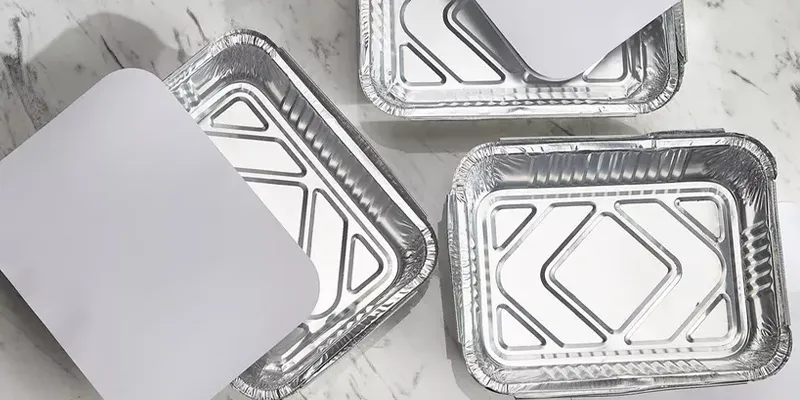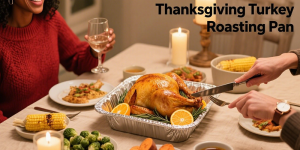Aluminium foil container buyers may be concerned about the following issues, which will help you understand the basic knowledge of aluminum foil containers and the issues that people are most concerned about.

12 FAQs of Aluminium Foil Containers
What aluminum foil container thickness do you offer?
YSA can provide various thicknesses of aluminum foil containers, usually in millimeters (mm). The thinnest can be 0.02mm thick and the thickest can be 0.147mm. Customers can choose the appropriate thickness according to their needs.
Are foil containers food safe?
YSA aluminum foil container manufacturer utilizes food-grade foil rolls to produce containers, certified by FDA, SGS, and ROHS. We provide safety certifications to customers to guarantee food safety and consumer health.
How is the load-bearing capacity of your aluminium foil containers?
The load-bearing capacity of an aluminum foil container is related to thickness, container shape, and foil alloy composition. Thick aluminum foil has better load-bearing capacity and is less likely to deform and crack. The thicker the foil, the heavier the container.
The alloy composition of the foil determines its basic mechanical properties, including strength, ductility, and corrosion resistance. Although the material and thickness are important, the shape of the foil container also affects its load-bearing capacity. Edge reinforcement ribs and pleated designs can enhance the load-bearing capacity of the foil container.
In short, the heavier the weight of the foil pan, the better the load-bearing capacity. For example, a full-size deep foil pan weighs about 100g and has a load-bearing capacity between 2-6 pounds.
How to pack aluminium foil containers?
Each foil container is plastic-wrapped inside the carton, with foam layers added to prevent damage during transit. There are product information labels on the carton for easy identification and inspection.
YSA aluminum foil containers are packed in cartons. Example: The Middle East-standard 8389 aluminum foil container has 1,000 pieces per carton, with a 20-foot container typically holding 303 cartons. The net weight of each carton is 9kg, and the total weight of 20 ft is 2727 kg, or 2.7 tons.
How to customize your aluminium foil containers?
YSA has 200+ aluminum foil container molds, customers can customize container style, surface pattern, size, thickness and lid type according to the application. Simply share your requirements—whether you’re a restaurant, takeaway service, supermarket, or distributor—and we’ll deliver the perfect solution.
What types do you offer?
YSA provides diverse container options in rectangular, square, round, oval, and divided formats, featuring full- to quarter-size aluminum foil pans, baking containers, and specialty pans for bread, cakes, and pies. First define your purpose, then choose the right aluminum foil container based on food type and capacity.
What are your foil pan sizes?
YSA aluminum foil container dimensions mainly include container top and bottom dimensions (mm), depth (mm), capacity (ml), weight (g) and thickness (mm), and even the number of containers in each carton (pcs) and carton dimensions. In addition to the common full-size foil pan, half-size foil pan, 1 3 foil pan dimensions, aluminum foil tray sizes can also be classified according to foil container shapes. Details such as: rectangular aluminum foil container size chart, round foil tray size chart, aluminum foil rosating pan dimensions, common foil tray sizes chart.
Can aluminium foil containers be heated in the microwave?
Not exactly. Ordinary crinkled foil containers cannot be put into the microwave unless they are marked “microwave safe”. Only smooth-walled aluminum foil containers and “microwave safe foil containers” can be used in the microwave.
Microwaves are electromagnetic waves that react with metals. Aluminum foil containers react to microwaves and may produce an electric arc, causing sparks.
This is why ordinary aluminum foil containers cannot be put into the microwave. Some special foil containers are coated or specially designed. Upon passing safety tests, aluminum foil containers are labeled “microwave-safe” to ensure safe food heating.
What is foil containers raw material?
YSA produces containers using aluminum foils 8011 and 3003, in tempers O, H22, H18, H24, and thicknesses 0.03-0.2mm. Our FDA & SGS-certified foil containers ensure food safety with no harmful substance transfer.
Always choose safety-certified manufacturers for aluminum foil containers or household rolls. Food-grade aluminum foil is safe and meets hygiene standards.
How do you ship aluminium foil containers?
YSA usually chooses ocean transportation. Before shipping, we pack each aluminum foil container in a sealed plastic bag and secure it with protective padding (paper/bubble wrap/foam) to prevent transit damage. Use tape to seal the carton, and put labels on the outside of the carton to write down the destination and product information. Tie the carton tightly, put it in the container, and transport it to all parts of the world.
Can I buy your aluminum foil to make containers?
Of course. YSA is the most trusted aluminium foil container manufacturer and factory in China, located in Gongyi City, Henan Province, which is the largest aluminum product production area in China.
Our container foil is in stock, food grade, cleanly degreased, with few pinholes, and coated with a layer of paint on the surface. It has good corrosion resistance, stamping performance and good appearance. It is the source of raw materials for various aluminum foil container factories.
Our container foil MOQ is generally 3 tons, but small orders are also supported. Bulk purchases offer significant discounts compared to individual orders, reducing both your costs and transportation expenses.
What lids do foil pans with lids have?
Foil pans with lids usually choose the material of the lid according to the actual application. Transparent plastic lid is used to display food, such as takeout food and refrigerated food; cardboard lid can provide better sealing and insulation effect, suitable for baked food; and an aluminum foil lid is suitable for high-sealing food, such as ready-to-eat food boxes, refrigerated food, barbecue food, etc., mainly for insulation. Heat sealing lid is suitable for heating food, such as yogurt cups, juice drinks, food packaging, etc.



